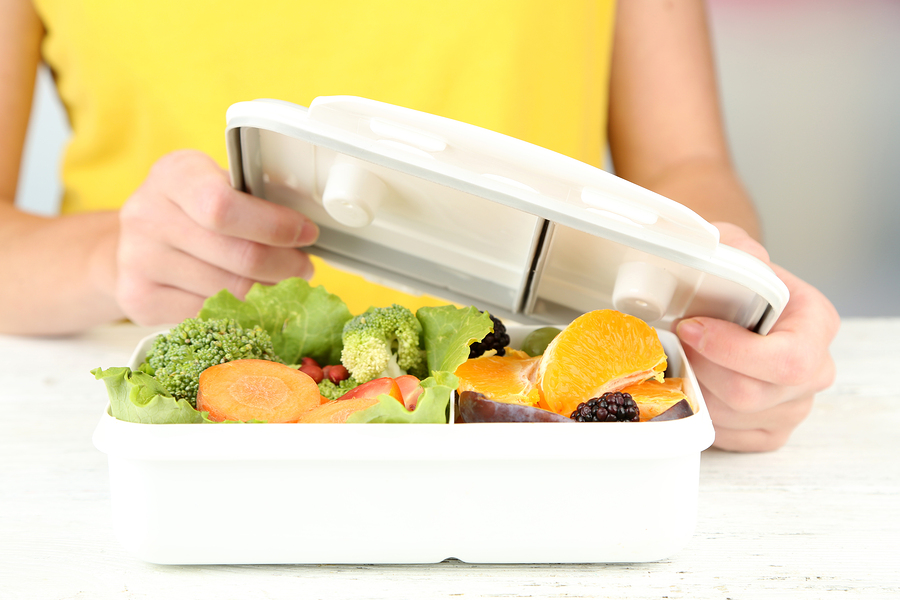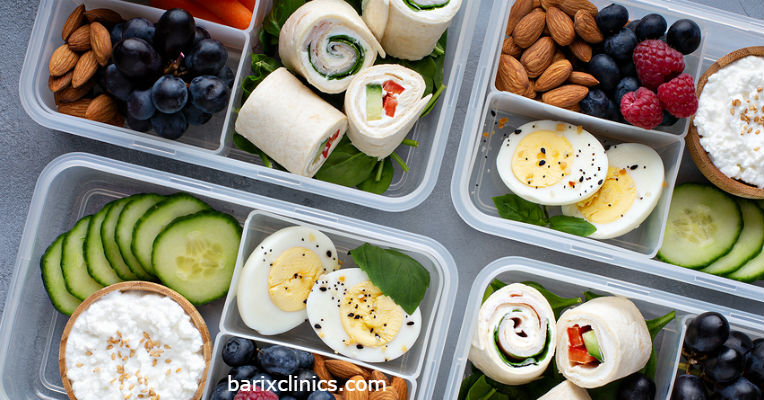Stress is a part of life. In short spurts, it can boost alertness and performance. But constant stress can have a significant downside. Luckily, there is an easy natural way to beat stress through exercise.
Download On Track with Barix: You Can Beat Stress in 10 Easy Moves
Exercise is, in fact, one of the best ways to combat stress and improve your mood. It works by:
- Increasing blood flow and the body’s ability to use oxygen.
- Producing more endorphins – giving you a natural mood boost.
- Enhancing quality sleep – vital for replenishing your body.
- Taking your mind off your worries.
- Improving your health, fitness, and confidence – giving you fewer reasons to stress.

How Much Exercise?
Set an exercise goal that works for you, and then adjust it. Things to consider when you create your goals:
- Take into account current fitness level, physical limitations, injuries, or other restrictions.
- Start small, be consistent, and build slowly.
- As you lose weight, it takes less work to move your body. That means the same exercise uses fewer calories. You’ll want to continuously bump up your effort to account for a shrinking body weight during the weight loss phase.
- The American Heart Association recommends a minimum of 150 minutes of moderate aerobic activity every week and at least two well-rounded strength training sessions.
- Tracking steps can also be an effective way to ensure enough overall movement in your day. Build to a daily goal of 10,000 steps a day or more.
10 Moves to Meet Your Weekly Exercise Target
Any exercise can reduce your stress. It’s always best to choose an activity you enjoy. Working out with a friend or family member can also add stress-busting benefits. After all, if you’re having fun, you’ll be more likely to stick with it. If you enjoyable and exercise don’t seem to work in the same sentence, branch out to some new activities. You’re sure to find something doable.

Move 1
Brisk Walking. It’s simple, flexible, and almost everyone can do it. Even a quick 10-minute walk can restore calm. Take frequent walks throughout your day or go for one longer walk – both strategies work. Whenever possible, get out in nature to multiply the benefits.
Move 2
Swimming or Water Aerobics. Easy on joints, swimming provides a soothing full-body workout. For added social fun, try a water aerobics class.
Move 3
Dancing. You can do it in your living room, take a class, or head out for a night of music and dancing- what a great way to enjoy life and get into relaxation mode.
Move 4
Cycling. Indoors or out, bike riding is a joint-friendly workout. Recumbent bikes offer a comfortable seat and back support. Combine indoor cycling with some great music or lose yourself in a drama-packed movie. Outdoors, enjoy the sights and sounds of nature as you work out the stress.
Move 5
Yoga. The stretching and breathing combination in yoga practice is an incredibly effective stress zapper. You can warm it up with hothouse yoga, get intense with aerobic yoga, or opt for a gentle approach.
Move 6
Tai Chi. Slow, purposeful movements and breathing provide a mind-body connection in tai chi. It’s an exercise that almost everyone can do.
Move 7
Gardening. Think of all the movements you make when gardening – stretching, bending, digging, lifting, and carrying. It works a full range of muscles. You can produce food or beautify your environment and regain calm simultaneously.
Move 8
Boxing. Boxing is a great way to burn off stress while getting a heart-pumping workout. Hang a boxing bag in your basement or garage, or find a nearby class to learn the basics.
Move 9
Strength Training. The rhythmic motion of weight lifting is soothing. The fast results help you feel strong and in control.
Move 10
Non-Exercise Techniques. Exercise is necessary for a healthy body and great for stress reduction. Combine it with other calming habits for even better results.
- Get organized. If you are constantly running late and feeling overwhelmed by a never-ending to-do list, get organized. Cut out non-essential activities and have a daily plan for your time.
- Prioritize sleep. Sleep is your body’s time to recover. Getting a healthy dose of sleep each night can help you better tackle stress.
- Eat right. Limit highly processed foods; instead, opt for whole, fresh foods, including lean protein sources, fresh vegetables and fruits, and whole grains. Eating right helps you have the nutrients and pep to feel your best each day.
- Include a daily meditation practice. You may want to start with a guided meditation – there are many to choose from on the internet. Also, consider breathing exercises – very helpful for in-the-moment stress reduction.
- Connect with others. The human connection triggers hormones that both calm and lift us up. Make time to be with others who make you feel safe and understood.
- Have fun. Carve out time to simply relax and have fun. Nourishing yourself in this way will put you in a better place to handle the stress that comes your way.
- Be grateful. Take time each day to focus on all of the good in your life. It’s easy to get so caught up in the things that are wrong that we lose sight of all of the things that are right.
Bottom Line
Keep your overall ability to fight stress with a good daily exercise routine. Practice a variety of stress management techniques. Then when stress hits, you’ll be able to stay cool and calm by using the tools that work best in that situation.




